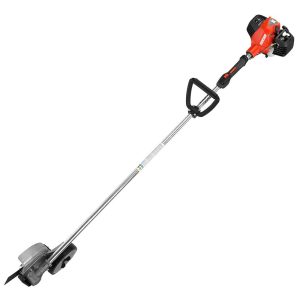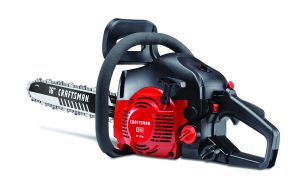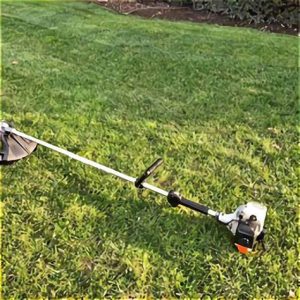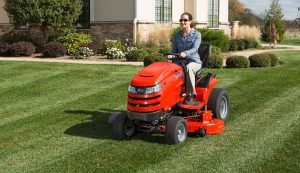Poulan Chainsaw Only Runs When Choked: FIXED
Using the choke to operate your chainsaw suggests a problem.
Poulan chainsaws only run with the choke on when they’re getting too much air or fuel.
An old gas, pierced or clogged fuel line, plugged fuel filter, clogged fuel vent, damaged carburetor gasket, or dirty carburetor may cause this. Chainsaw carburetors may need adjusting.
Safety first—remove the spark plug boot before chainsaw maintenance. Let the engine cool and all parts stop moving.
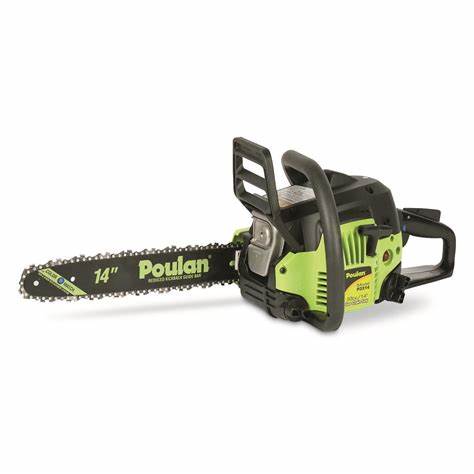
Before diagnosing, repairing, or operating, follow the operator’s manual’s safety guidelines.If you don’t know how or can’t properly repair it, call a pro.
Table of Contents
7 Causes Your Poulan Chainsaw Requires the Choke to Be Engaged
Used Poulan Chainsaw Gas
When a fuel restriction occurs because of a clog or fuel component failure, the underlying cause is often old gas.
If you’re trying to get by on less fuel, you might need to utilize the choke to restrict airflow into the engine. The proper gas-to-air ratio for combustion will then be restored.
Sticky particles and varnish that form in old gas in a Poulan chainsaw might clog fuel components and prevent enough fuel from reaching the engine.
The solution is to empty the tank and refill it with new gas and oil if you discover old gas in your chainsaw.
Add a fuel stabilizer to the fuel, such as Sea Foam or STA-BIL, to help clean out the fuel system and lower moisture.
After refueling the chainsaw with a new mixture of fuel and stabilizer, turn it on and let it run for a while. The goal is to run the treated fuel through the chainsaw several times to break up any clumps of debris.
Follow these guidelines to lessen your fuel’s negative effects:
- Fuel having an octane value of 87 or higher is recommended.
- Don’t fill up with gas that has more than 10% ethanol in it.
- For Poulan 2-cycle chainsaws, the correct ratio of gasoline to premium 2-cycle oil is 40:1.
- Don’t keep fuel in a damp area.
- You have 30 days to use the fuel before it starts to degrade, or you can add a fuel stabilizer to extend its shelf life.
Poulan Chainsaw with Clogged Fuel Filter
The fuel filter for the chainsaw is housed in the fuel tank itself. Attached to the fuel line, it prevents unwanted particles from being sucked into the engine.
This little cylinder-shaped filter can become clogged with grime if it isn’t changed frequently. The gasoline filter’s flow rate will be decreased as a result.
Running the chainsaw with the choke partially on can adjust the air-to-gas ratio when there isn’t enough gasoline to combine with air.
To solve this problem, take a clean cloth and wipe the area around the gasoline cap before replacing the fuel filter. Take remove the tank’s fuel filter. A neatly curved piece of wire would do the trick.
Remove the old Poulan fuel filter from the line and replace it with a new one. The retaining ring must be protected at all costs. The fuel line is fastened to the filter with this little ring.
Reinsert the filter into the fuel tank. Put the gasoline tank cap back on.
Poulan Chainsaw with a Burst or Clogged Fuel Line
If the fuel line is clogged, limiting adequate fuel flow, or if air is entering the fuel system via a puncture in the fuel line, you may need to engage the choke.
The clog in the fuel line must be removed in order to fix the problem. To accomplish this, the chainsaw’s fuel line must be disconnected.
Carburetor cleaning can be sprayed into the line to help break up the obstruction. The next step is to use compressed air to blow the debris out of the pipe.
Once the obstruction has been cleared, the line should be reconnected. If the gasoline line is dry and cracked and you are unable to access it, you should get a new one.
Check for a hole in the line that would allow air to enter the fuel system and force the use of the choke by adding air to the cylinder.
An Obstructed Poulan Chainsaw Fuel Vent
A Poulan chainsaw will have a little circular vent. Air must be able to flow via this vent in order to enter the tank during fuel consumption and exit the tank during refueling.
Inadequate venting causes the fuel tank to develop a vacuum, preventing fuel from escaping. As a result, the carburetor will receive less fuel.
Sawing on a flat surface with the choke off is one way to determine if the fuel tank vent is blocked. If it starts running sluggishly, you can fix it by releasing some air from the fuel cap.
As long as air can get into the tank, the motor shouldn’t have any problems.
You can try to recreate the problem where the engine begins to run sluggishly and possibly shut off by replacing and tightening the fuel cap while letting the saw continue to operate.
REMEDY: Unclog the fuel tank’s ventilation system. A breather is a tiny piece of equipment built into the Poulan chainsaw’s body directly in front of the handle.
Damaged Poulan Chainsaw Carburetor Gasket
When the gasket behind the carburetor deteriorates, it can no longer seal properly, letting air into the system.
When there is an excessive amount of air compared to fuel in a Poulan’s cylinder, the engine operates in a condition known as “running lean.”
Remove the linkages and nuts holding the carburetor in place to gain access to it. The gasket and carburetor must be taken off. Replace the gasket on the carburetor.
The carburetor should be inspected prior to being installed. While the chainsaw is apart, you may use the opportunity to clean it.
Poulan Chainsaw with a Filthy Carburetor
To get your Poulan chainsaw started and running, the carburetor controls how much fuel is mixed with air to create combustion. Varnish and deposits can prevent the carburetor from functioning properly.
You can fix your carburetor by yourself if you have some mechanical aptitude. Remove deposits from old fuel by disassembling the carburetor and cleaning it using carburetor cleanser.
After cleaning, if the carburetor still doesn’t work, you may need to have it rebuilt or get a new one.
Poulan Chainsaw Carburetor Requires Fine-Tuning.
If you want to alter the engine’s RPMs at both idle and full throttle, you may need to tinker with the carburetor. It could be making the engine run too lean and requiring the use of the choke.
The carburetor features a set of adjustment screws for just such a purpose. These screws are located alongside the chainsaw’s pull starter.
The screws are labeled with the speeds they control; “L” means low, “T” means idle, and “H” means high. Before tinkering with the chainsaw’s carburetor, let it run for a few minutes to get it up to operating temperature.
Clean the air filter and the vents before attempting to adjust the carburetor.
Poulan chainsaw carburetor fine-tuning:
- The L screw is where you should begin adjusting the chainsaw’s idle speed. While the chainsaw is running, spin the L screw clockwise until it sounds like it could shut off. Apply throttle and make sure the engine revs up and down smoothly. Make fine tuning adjustments until you achieve optimal performance.
- If the chain is moving at an idle speed, you can fix it by adjusting the T screw. To adjust the T screw properly, crank it clockwise until the chain barely wiggles. When the chain no longer moves, turn the screw counterclockwise.
- The H screw is used to fine-tune the air/fuel ratio at high RPMs. Don’t force it, but turn the screw counterclockwise until it stops. It’s expected to start feeling lethargic. To get the engine running smoothly, spin the screw slowly in the clockwise direction. To ensure a steady acceleration, press the throttle. Do not over-adjust and force the engine to its maximum RPM; doing so could cause irreparable damage. For information on maximum RPM, consult your user handbook.
The carburetor on many chainsaws has a limiter cap so the operator can’t turn it all the way. The carburetor on some chainsaws can only be adjusted with specialized equipment.
Contact your neighborhood Husqvarna repair shop that fixes Poulan chainsaws if you’re having carburetor issues and either can’t or don’t know how to tune it properly.
